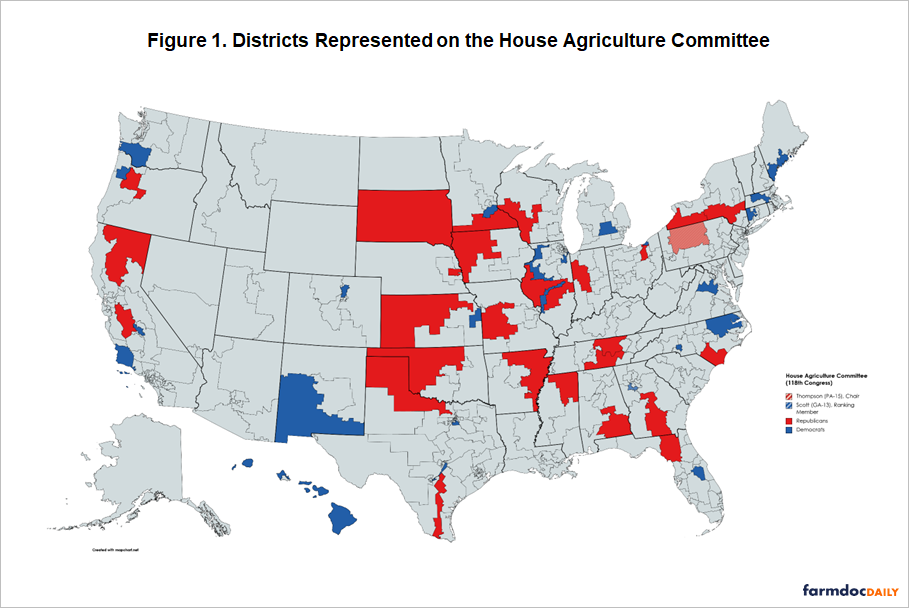Creating a Farm Bill in the House: A Step-by-Step from Farmdoc Daily
 The U.S. House of Representatives has begun the process to elect chairs, ranking members, and majority and minority members of the standing committees – which will serve as a starting line for a potential 2023 Farm Bill.
The U.S. House of Representatives has begun the process to elect chairs, ranking members, and majority and minority members of the standing committees – which will serve as a starting line for a potential 2023 Farm Bill.
The potential reauthorization of the omnibus suite of farm bill programs and policies begins at the committee level. For large undertakings of legislation like the farm bill, committees often start early with drafts to begin negotiations and potential consolidation with other various bills. The chair and ranking member of the committee manage the bill on the floor.
Committee members appointed by leadership will resolve differences and produce a final legislative text. This bill is reported back to the House and Senate for final consideration and, if passed, is presented to the President for signature or veto.
The 118th Congress is narrowly divided between the party caucuses. The House is controlled by Republicans (222 to 213) with 218 votes needed, and the House Agriculture Committee on Agriculture features a three-vote majority for Republicans (28 Republicans to 25 Democrats).
Much about the farm bill discussion comes down to the politics between federal payments to farmers and federal payments to low-income persons and households for purchasing food in the Supplemental Nutrition Assistance Program (SNAP). The search for common ground between them determines much about the farm bill.

Figure 1 uses data from the Census Bureau (U.S. Census Bureau, My Congressional District), the 2017 Census of Agriculture (USDA, 2017 Census of Agriculture: 2017 Congressional District Profiles), and USDA’s Food and Nutrition Service, for fiscal year (FY) 2018 (USDA, FNS: SNAP Community Characteristics).
The total population represented by each caucus on the Ag Committee is close: the 28 Republicans represent 21.4 million people, while the 25 Democrats represent just over 18 million people. Republicans represent an estimated 289,315 more farms than Democrats and nearly 158 million more acres in farms, according to the 2017 Census of Agriculture.
The view from the starting line in the Committee on Agriculture of the U.S. House of Representatives contains stark differences between Republicans and Democrats. Among other things, one result is that Democratic districts represent a much larger ratio of SNAP households to farms.
If a Congress narrowly divided between the parties is to achieve a 2023 farm bill, it will require maintaining a bipartisan effort that depends on how these two priority areas are addressed.
***
Coppess, J. “A View of the 2023 Farm Bill at the Starting Line in the House.” farmdoc daily (13):28, Department of Agricultural and Consumer Economics, University of Illinois at Urbana-Champaign, February 16, 2023.
